Yesterday I received a nice e-QSL for Polderpop Radio, a LPAM station from Veldhoven, The Netherlands on 1134 kHz. For details of this station see my previous post about my reception of this station.
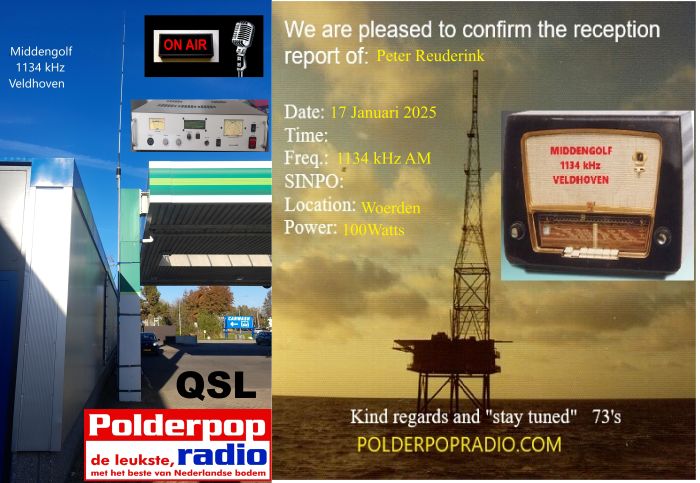
"It's not true I had nothing on, I had the radio on" - Marilyn Monroe
Yesterday I received a nice e-QSL for Polderpop Radio, a LPAM station from Veldhoven, The Netherlands on 1134 kHz. For details of this station see my previous post about my reception of this station.

46 years ago Radio Sofia, the international service of Bulgaria, was one of the first shortwave programs I regularly listened to in the evening. Radio Sofia, now renamed to Radio Bulgaria, terminated their shortwave service in 2012. But the powerful 270 kW transmitter from Vidin on 576 kHz with the BNR Horizont program is an easy catch though. And fortunately they still issue traditional QSL cards:


I sent my report to reception.report@bnr.bg and received my QSL 3 months later.
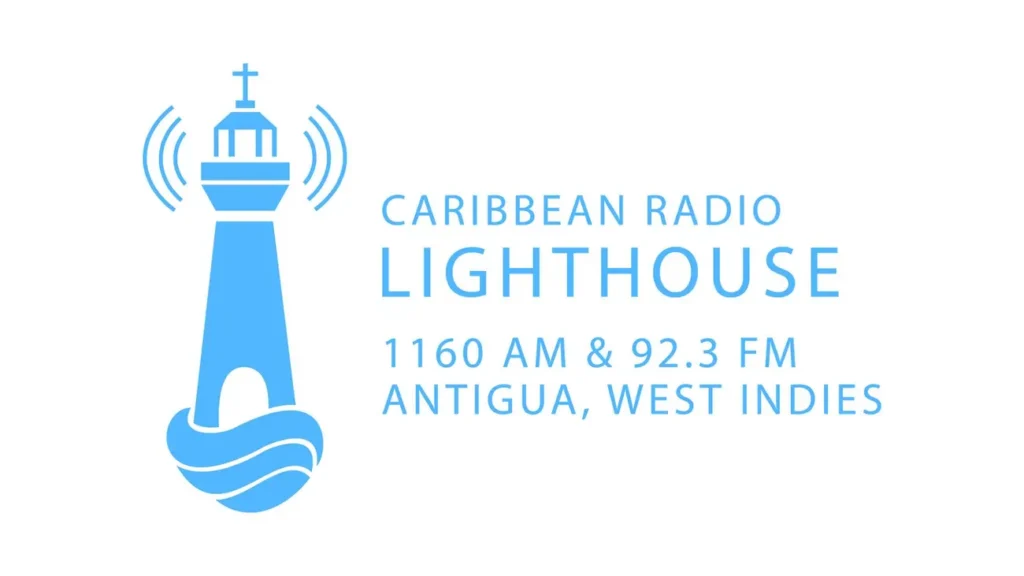
Not my first QSL from Antigua. In the 80’s and 90’s we had the Caribbean Relay station broadcasting Deutsche Welle and BBC programs. But it is my first MW (mediumwave) QSL from this island, and another country I can add to this blog. I got a nice email from Mr. Nathan Owens explaining the mission of this station.
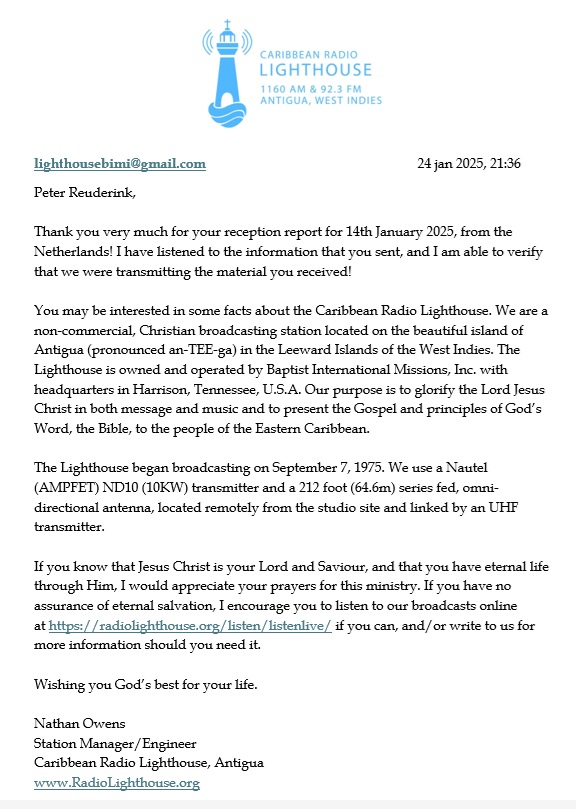
You can learn a bit about the history of this station on their website. They are active since 1975, and there have been a few times the station had to recover from hurricanes. But for 50 years now the station has been broadcasting their message from the Caribbean.

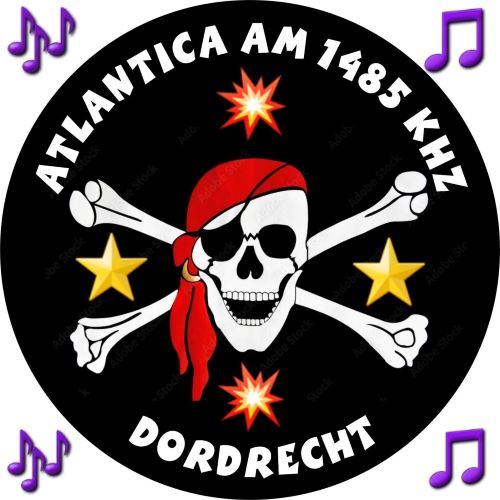
There is low power (100 Watts) and “Real Low Power”. 1485 is the “Real Low Power” AM (LPAM) frequency in The Netherland: stations should have 1 Watt maximum. There are around 25 stations active on this frequency. Unfortunately DX-ers in the Netherlands will typically hear one dominant station only. Outside the Netherlands you might be able to benefit from variations in propagation conditions, enabling you to hear several stations.
On my QTH Radio 182, only 15 kilometers away (basically across the meadow) is dominant. But using my NTi Megaloop FX antenna to “null” them out, there is apparently enough of a signal left for Atlantica AM from Dordrecht. On Sundays that is, because I that’s when they are “on air”.
You can check your reception against Flux Radio, because they broadcast the Atlantic AM transmissions as well. If you receive them, feel free to go to the Facebook page of Cor Hitzerd. That’s how I got in touch:

Following my report I had a nice conversation with Cor. He shared quite a lot about his pirate history, his friends on the air, and how they as pirates promoted lots of Dutch artists. The fact that you can connect to station owners is so nice about DX-ing these days! Cor also sent me a few pictures… here we go:
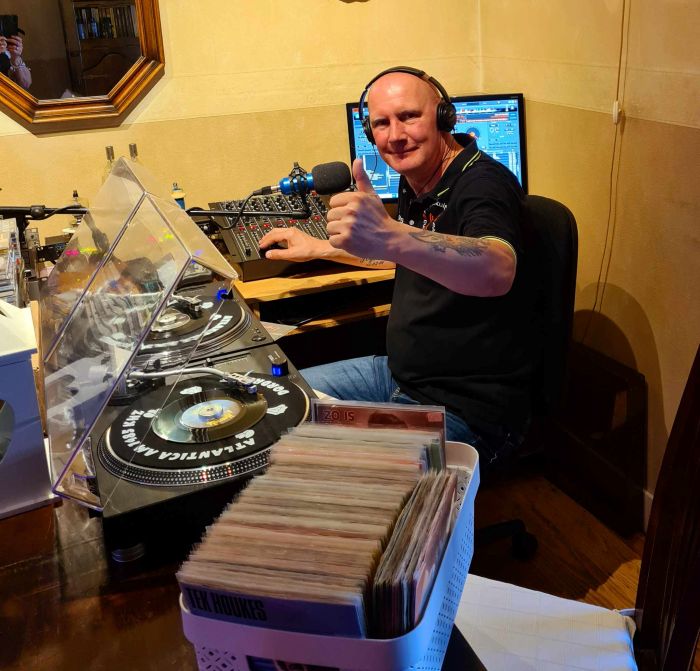
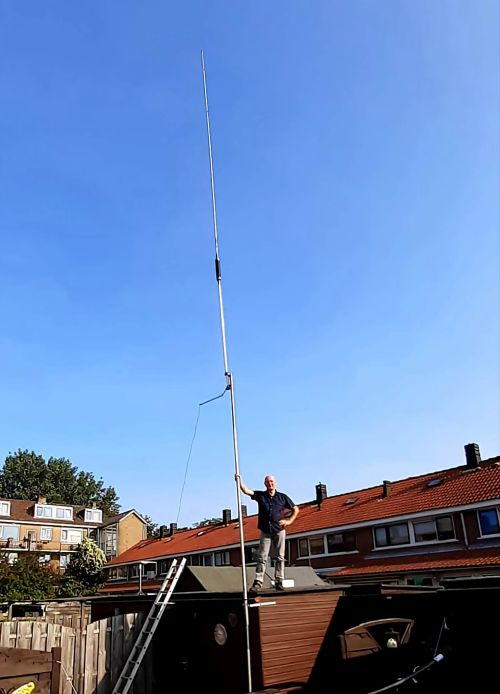
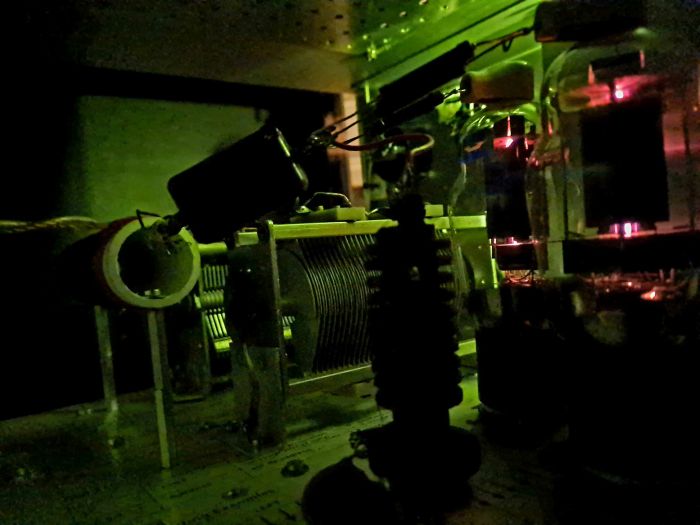
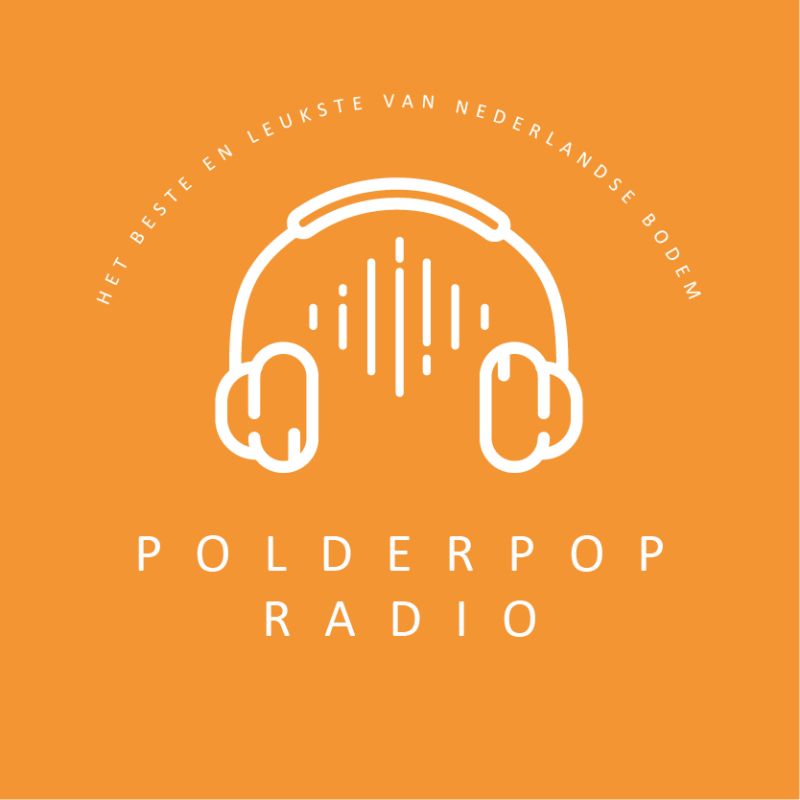
For DX-ers and QSL collectors listening to LPAM stations in The Netherlands can be rewarding. First of all because many of them are run by radio enthusiasts who don’t mind taking the time to explain a lot about their station via messenger, whatsapp or email. But also because it is a very dynamic scene.
In 2023 I got a QSL from 1134AM from Ooijen. They are gone and now I can hear Polderpop Radio from Veldhoven on this frequency. Broadcasting with 100 Watt they can be received in reasonable quality 82 kilometers away. That is: during the day, in the evening hours it is usually Radio Kuwait that I find here.
Polderpop Radio has quite a history. They’ve been on cable, mediumwave, internet, DAB+ and now they’re back on AM. Their program focuses on popmusic from Dutch artists. I sent my report via the contact form on their website, and Jacco Hagoort from Polderpop Radio confirmed my reception within a day.
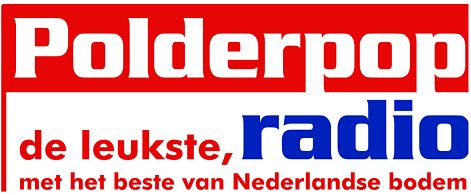
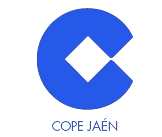
The main networks like RNE, SER, Onda Cero and COPE still have local stations which provide a nice DX target. The biggest problem is to hear the local ID. A good opportunity for COPE stations is around 21:57 h UTC (22:57 h local time in Spain). In the late evening hours they broadcast the network program “La Linterna”, but at this time it is interrupted by a local ID followed by local commercials.
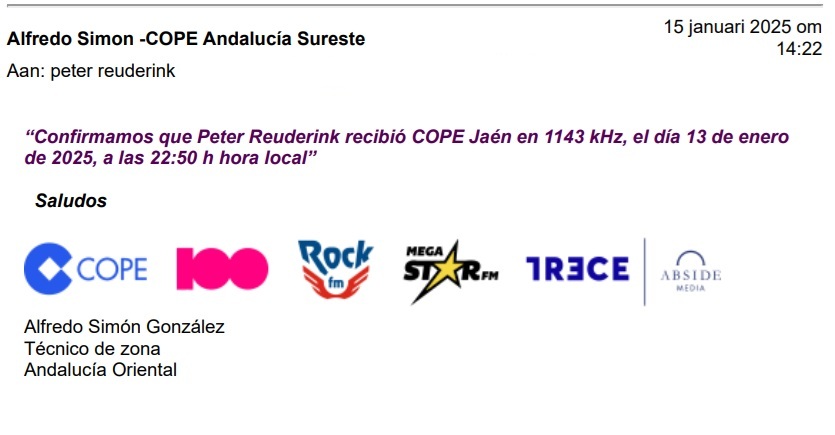
I heard COPE Jaén on 1143 kHz. This frequency is shared with COPE Ourense. The two stations often mix, making it a bit more difficult with my limited knowledge of the Spanish language. But this time I heard COPE Jaén only. Mr. Simon from the Engineering department Andalucia Sureste was so kind to confirm my report.

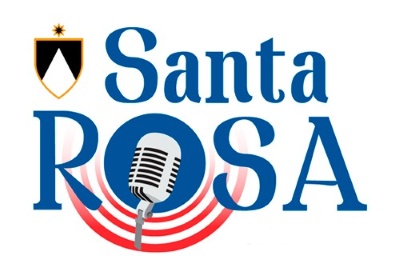
While conditions towards the USA and Canada are very poor, the medium wave continues to suprise me. I’d never thought that in my suburb location I would be able to receive stations from South America. Recently I heard Radio Santa Fe from Colombia, but two nights ago I heard Radio Santa Rosa from Lima, Peru on 1500 kHz. That’s 10525 kilometers which sets a record for me!

Now please don’t think that this is “easy listening”. For a start: 1500 kHz is a frequency on which I always experience heavy noise, sometimes by a pulsating signal that sounds as if it is sending digital information. But if someone in Peru keeps shouting “Santa Rosa” than all of a sudden you have 4 perfect IDs (and a lot of noise) in 2 minutes. Check it out on this Youtube clip.
I’m trying to get a QSL from them, but I struggle to find an email address that works. So if someone has a suggestion, please let me know!
UPDATE: thanks to Patrick Robic I got a brief reply from Mr. Riofrio. His gmail logo suggests that he works at Radio Santa Rosa. But it’s hardly a QSL, so I will order myself a pigeon and send him out with a regular mail to Lima:
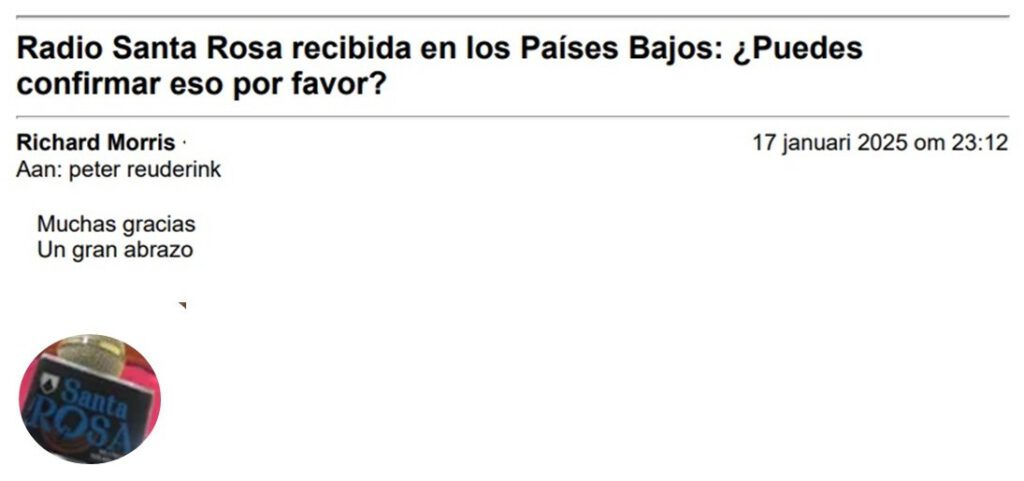
While Transatlantic conditions are poor there is still plenty to listen to on medium wave. This week I received TWR from Parakou, Benin. They started a bit earlier than announced. Around 0305 h UTC I heard some nice African music like the song “Noé” from Pasteur Plaingué. The Shazam app works wonders… At 0320 their regular program started in Hausa, the lingua franca of the region. The typical TWR interval signal was absent.

My report was answered within a day by Mrs. Lorraine Stavropoulos, DX manager for TWR Africa via lstavrop@twr.org. Unfortunately, unlike the e-QSL from TWR Eswatini which featured the 50 years anniversary logo, there is no reference made to Benin. This seems to be a bit of a TWR policy, as neither of my Kyrgyzstan QSLs indicated the QTH.
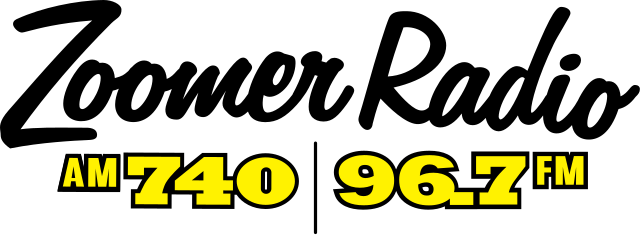
A QSL for CFZM 740 Zoomer Radio, Toronto. I heard this station for the first time this year. The reception report was via their webform. Following a brief email exchange Genya Hulak was so kind to send me a fully detailed email:
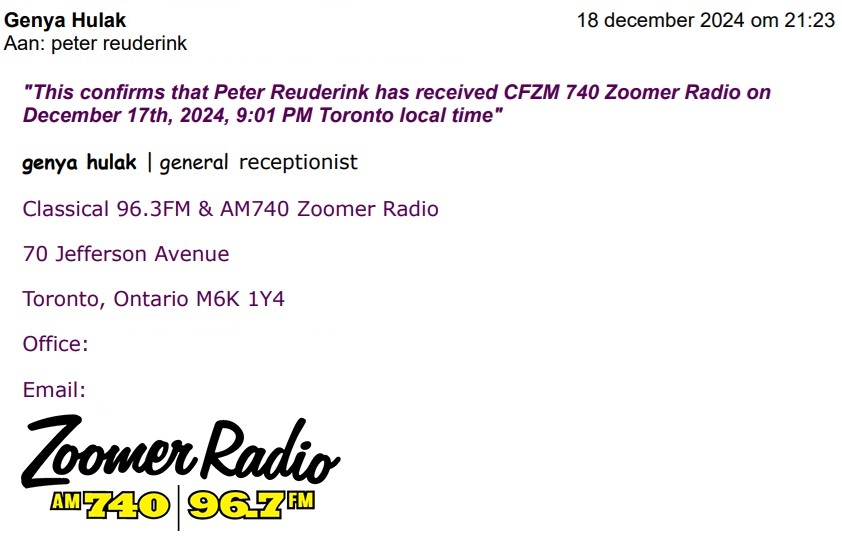
The 740 AM frequency was in use by CBL (a CBC station) until 2000. But as their AM transmissions suffered from interference in downtown Toronto they left this frequency. Despite the interference issue many stations contested for this clear channel frequency. The application was granted to CHWO which moved from 1250. CJYE is their replacement on 1250. The CBC brand is still visible on the Hornby transmitter building:
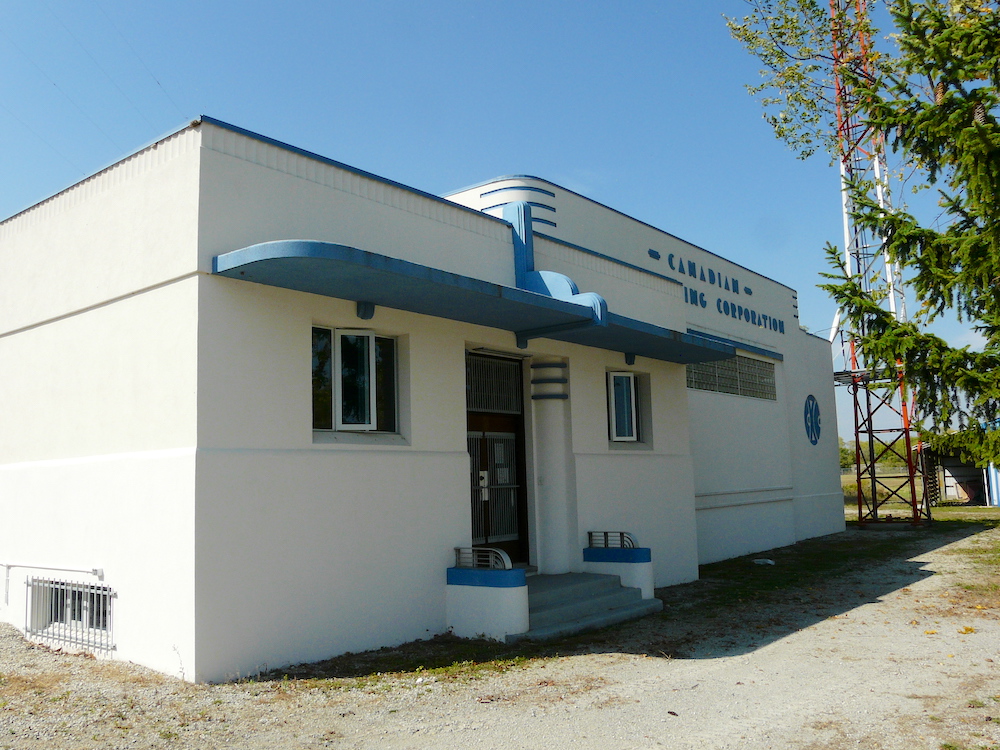
In 2007 the CHWO operations were sold and the station was rebranded to CFZM. The format is “oldies and adult standards”.

In The Netherlands the 1485 kHz is reserved for 1 Watt LPAM’s. That should make it an interesting frequency, but despite their low power, Radio 182 from Waddinxveen at 15 kilometers from my QTH is so dominant that it blocks other stations. Their signal probably benefits from a good antenna location and only green fields in between them and me.

So when I visited family in Akersloot I decided to test my new Tecsun PL-368 radio, the one I won during the SWL-2024 contest, on 1485 kHz. I was able to pick up Radio Elvira from Heerhugowaard over a distance of 15 kilometers. Just above noise level at a 2dB SNR (it’s a nice feature that the Tecsun displays this info). They replied with a kind email explaining that for some reason their coverage is only 4-5 kilometres north, but significantly better to the south (where I was receiving them).
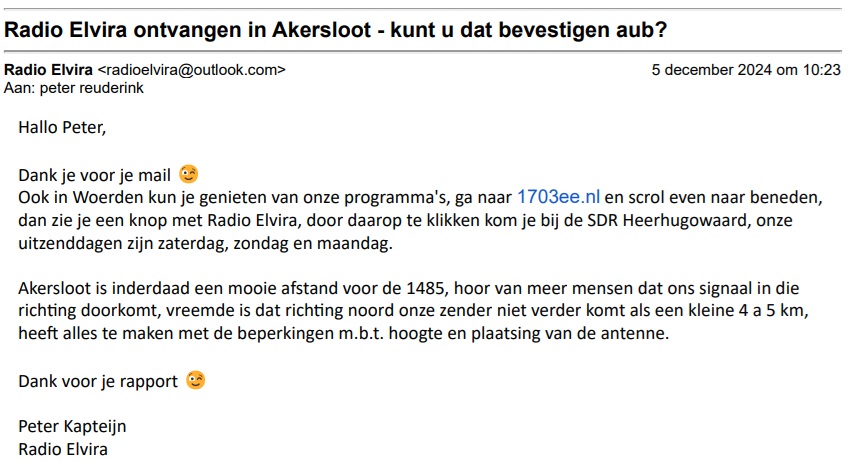
Radio Elvira has a nice website where they also post some local news. They advertise as “Radio Elvira 1485 Dijk en Waard”. Dijk the dutch word for dike, and Waard the dutch word for polder.
© 2025 Peter's DX Corner
Theme by Anders Noren — Up ↑